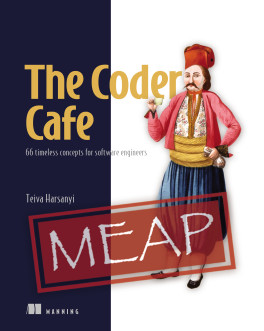pro $24.99 per month
- access to all Manning books, MEAPs, liveVideos, liveProjects, and audiobooks!
- choose one free eBook per month to keep
- exclusive 50% discount on all purchases
- renews monthly, pause or cancel renewal anytime
lite $19.99 per month
- access to all Manning books, including MEAPs!
team
5, 10 or 20 seats+ for your team - learn more

Now updated for Swift 5! Swift is more than just a fun language to build iOS applications with. It features a host of powerful tools that, if effectively used, can help you create even better apps with clean, crystal-clear code and awesome features. Swift in Depth is designed to help you unlock these tools and quirks and get developing next-gen apps, web services, and more!
about the technology
It’s fun to create your first toy iOS or Mac app in Swift. Writing secure, reliable, professional-grade software is a different animal altogether. The Swift language includes an amazing set of high-powered features, and it supports a wide range of programming styles and techniques. You just have to roll up your sleeves and learn Swift in depth.
about the book
Swift in Depth guides you concept by concept through the skills you need to build professional software for Apple platforms, such as iOS and Mac; also on the server with Linux. By following the numerous concrete examples, enlightening explanations, and engaging exercises, you’ll finally grok powerful techniques like generics, efficient error handling, protocol-oriented programming, and advanced Swift patterns. Author Tjeerd in ’t Veen reveals the high-value, difficult-to-discover Swift techniques he’s learned through his own hard-won experience.
what's inside
- Covers Swift 5
- Writing reusable code with generics
- Iterators, sequences, and collections
- Protocol-oriented programming
- Understanding map, flatMap, and compactMap
- Asynchronous error handling with Result
- Best practices in Swift
An excellent guide to using the advanced features of Swift to produce clean, high-performing code. The content is masterfully delivered, making it easy to quickly level-up your skills.
Highly recommended to anyone interested in the Apple platform. For the novice who wants to become an expert, this is definitely where you should start!
Because Swift is so new, it’s hard to find good resources to learn it. Look no further than this book.
team
- five seats for your team
- access to all Manning books, MEAPs, liveVideos, liveProjects, and audiobooks!
- choose another free product every time you renew
- choose twelve free products per year
- exclusive 50% discount on all purchases
- renews monthly, pause or cancel renewal anytime
- renews annually, pause or cancel renewal anytime
-
![]() Swift in Depth ebook for free
Swift in Depth ebook for free
team
- five seats for your team
- access to all Manning books, MEAPs, liveVideos, liveProjects, and audiobooks!
- choose another free product every time you renew
- choose twelve free products per year
- exclusive 50% discount on all purchases
- renews monthly, pause or cancel renewal anytime
- renews annually, pause or cancel renewal anytime
-
![]() Swift in Depth ebook for free
Swift in Depth ebook for free


















 Swift in Depth ebook for free
Swift in Depth ebook for free